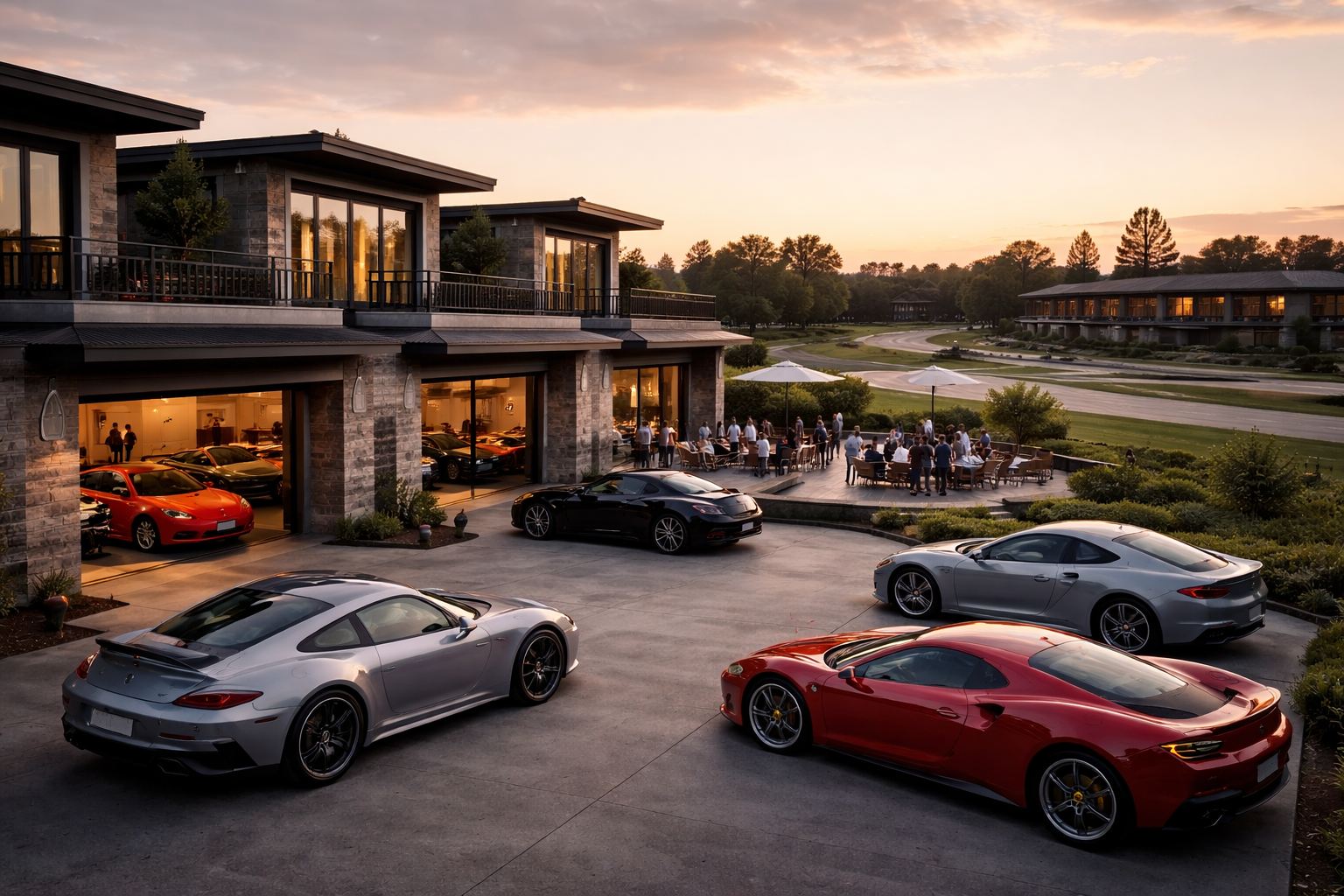When considering private club trends, the image that often comes to mind is one of leather armchairs and hushed conversations, reminiscent of a bygone era. However, the reality is far different. Private clubs are undergoing a significant transformation, adapting to a new generation of members with evolving preferences and embracing technological advancements to stay relevant.
Today’s private clubs are redefining value by moving beyond tradition and focusing on curated experiences, personalized offerings, and a strong sense of community. Wellness and recreation are taking a holistic approach, incorporating fitness centers, yoga studios, and healthy dining options. Technology is seamlessly integrating with tradition, enhancing member engagement and operational efficiency. Additionally, there is a noticeable shift towards inclusivity, with clubs actively seeking to diversify their membership base and cater to a wider range of interests.
This article explores the key private club trends shaping the future of private clubs in the next decade:
1. Redefining Value: Beyond Tradition
While tradition holds a certain allure, today's members seek more than just a prestigious address. A recent Capstone Hospitality Membership Sales report revealed a concerning trend: a 63% increase in member resignations in 2023 compared to 2022. This highlights the need for clubs to redefine value.
The focus is shifting towards curated experiences, personalized offerings, and a strong sense of community. Members are looking for clubs that cater to their specific interests, be it wellness programs, co-working spaces, or educational workshops. This change reflects a broader societal shift towards experiential value over material possessions.
Tailored Experiences
One of the prominent private club trends is offering tailored experiences that cater to individual member preferences. This could mean organizing exclusive wine tastings, offering bespoke travel arrangements, or providing unique cultural events. The ability to customize and personalize services is becoming a significant differentiator for modern private clubs.
Building Community
Creating a sense of community is increasingly important. Clubs are investing in communal spaces and events that encourage interaction among members. From casual social gatherings to structured networking events, these initiatives foster a sense of belonging and community among members, which is crucial for retention and engagement.
2. Wellness & Recreation: A Holistic Approach
Gone are the days when a private club meant just golf courses and formal dining. Wellness is a top priority for today's generation. Clubs are incorporating fitness centers, yoga studios, and healthy dining options to cater to this growing demand.
Integrative Health Programs
Beyond traditional fitness facilities, clubs are introducing integrative health programs. These include mental health resources, such as meditation and mindfulness classes, nutritional counseling, and spa services. By adopting a holistic approach to wellness, clubs can address the comprehensive health needs of their members.
Diverse Recreational Activities
In addition to wellness, recreational activities are expanding. Clubs are now offering diverse options such as hiking, cycling, and even adventure sports. This diversification attracts a broader membership base, including those who may not be interested in traditional club activities like golf or tennis.
3. Technology Embraces Tradition
Technology is no longer seen as an unwelcome intrusion in private clubs. A 2022 Clubessential report highlights the rise of “Total Experience” (TX), where technology seamlessly integrates with the member experience.
Digital Transformation
The digital transformation of private clubs involves the implementation of mobile apps that serve as central hubs for all member interactions. These apps facilitate reservations, contactless payments, event registrations, and even member-to-member communication. This convenience enhances the overall member experience, making club membership more appealing to tech-savvy individuals.
Enhanced Member Engagement
Technology also enables clubs to personalize communication and engagement. Using data analytics, clubs can understand member preferences and behavior, allowing for targeted marketing and personalized service offerings. This level of customization not only improves member satisfaction but also drives loyalty and retention.
4. Diversifying Membership: Inclusivity is Key
Private clubs have historically faced criticism for exclusivity. However, there's a growing shift towards inclusivity. Clubs are actively seeking to diversify their membership base by offering flexible membership options and catering to a wider range of interests.
Attracting Younger Generations
To attract younger generations, clubs are introducing family memberships and creating programs specifically for children. This approach not only broadens the club's appeal but also ensures long-term sustainability by engaging future generations of potential members.
Embracing Diversity
Inclusivity efforts extend to embracing diversity in all its forms. Clubs are now more welcoming to people of different backgrounds, professions, and interests. This shift not only enriches the club's culture but also reflects broader societal changes towards diversity and inclusion.
The Road Ahead
The private club industry is at a crossroads. By embracing these emerging private club trends, clubs can position themselves for continued success in the next decade.
Adapting and Innovating
The key lies in understanding the evolving needs of their members, offering a unique value proposition, and leveraging technology to enhance the overall experience. Clubs that can adapt and innovate will thrive, creating vibrant communities that cater to the modern member.
Sustainable Growth
Sustainable growth will be driven by clubs that can balance tradition with innovation. By maintaining core values while incorporating new trends, private clubs can remain relevant and attractive to current and prospective members.
In conclusion, the future of private clubs is bright for those willing to embrace change and prioritize member-centric strategies. As clubs continue to evolve, they will not only survive but flourish, becoming dynamic hubs of community and exclusivity in the years to come.
By staying ahead of the curve and adapting to the latest private club trends, clubs can ensure they meet the needs of their members while maintaining their prestigious status in the ever-changing landscape of private membership.








